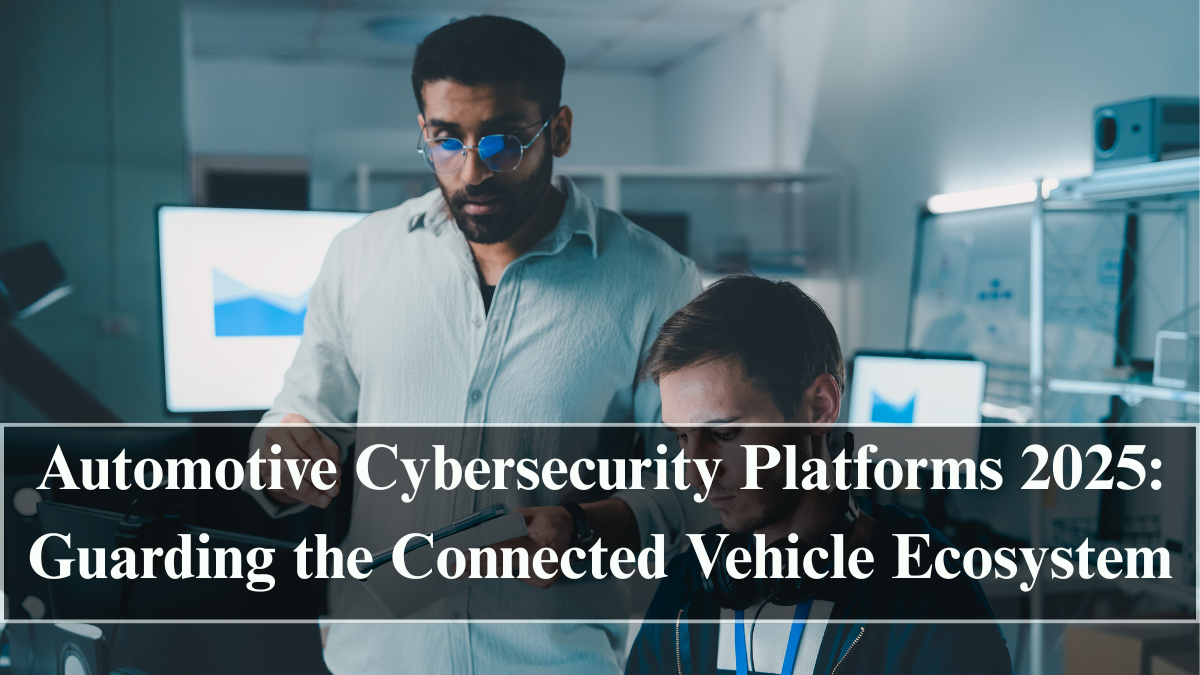In 2025, vehicles are no longer simple mechanical machines—they are advanced computers on wheels, constantly connected to cloud networks, other vehicles, and smart infrastructure. As connectivity grows, so does vulnerability. Modern cars handle millions of data exchanges every second, making them targets for hackers seeking to exploit weak points in infotainment systems, telematics modules, and EV charging station networks. This new reality has made Automotive Cybersecurity Platforms 2025 the backbone of digital safety in the mobility world.
The evolution of connected mobility has brought significant benefits in convenience and intelligence but has also introduced new types of threats. Unauthorized access, data theft, ransomware, and even remote vehicle manipulation are among the leading risks of 2025. Cybercriminals can exploit unpatched software or insecure over-the-air (OTA) channels, leading to compromised control systems or data leaks. This has prompted automakers and tech firms to create sophisticated, AI-driven security ecosystems that continuously protect every digital layer of the vehicle.

What Are Automotive Cybersecurity Platforms?
Automotive cybersecurity platforms are multi-layered digital defense systems that safeguard vehicles, networks, and mobility infrastructure from cyberattacks. They integrate various tools such as firewalls, intrusion detection systems (IDS), secure gateways, AI-based monitoring, and blockchain authentication. These platforms operate both inside the vehicle and across cloud-based networks, ensuring data transmitted between components remains encrypted and tamper-proof.
The platforms are designed to defend three major layers: the in-vehicle network (protecting control systems like ECUs), the external interface (securing connections to mobile apps and charging systems), and the cloud environment (where vehicle data is analyzed and updated). As vehicles become software-defined, these security systems ensure that every digital pathway is continuously verified and monitored.
The Role of AI and Predictive Defense
In 2025, AI and machine learning play a pivotal role in detecting, predicting, and neutralizing cyber threats before they occur. These systems analyze millions of data points per second to identify abnormal activity, such as irregular voltage patterns, unauthorized code execution, or unexpected communication between modules. When an anomaly is detected, the AI engine automatically isolates the threat, performs diagnostics, and prevents it from spreading across the network.
Machine learning algorithms are constantly improving, allowing cybersecurity systems to adapt to new attack strategies. Predictive models use historical data to anticipate emerging risks, while self-healing systems restore compromised software without manual intervention. This automation ensures vehicles remain safe even in transit, maintaining both security and uptime.
Protecting EV Charging and Smart Mobility Networks
As electric vehicles (EVs) become more mainstream, securing the charging infrastructure has become a top priority. A single compromised EV charging station can potentially infect multiple vehicles or even an entire grid. In response, cybersecurity platforms now include charging authentication systems, encrypted energy data transfers, and blockchain-led verification for charging transactions.
Additionally, vehicle-to-everything (V2X) communication—where cars interact with road sensors, smart lights, and other vehicles—has opened new gateways for cyberattacks. Automotive cybersecurity solutions in 2025 use secure communication channels, cryptographic keys, and AI-driven validation to maintain the integrity of these interactions.
How Automakers Are Responding
Global automakers are prioritizing cyber resilience as a critical part of vehicle design. Companies like Tesla, BMW, and Toyota are integrating security into their vehicle operating systems from day one. Collaborative frameworks between automakers, cloud providers, and cybersecurity firms are emerging to share global threat intelligence. Compliance with international standards such as ISO/SAE 21434 and UNECE WP.29 is now mandatory for production and sale of connected vehicles.
Manufacturers are also implementing secure OTA update frameworks, ensuring software patches are authenticated and encrypted before installation. Many vehicles can now detect unauthorized access attempts and automatically alert both drivers and manufacturers in real time.
Challenges and Future of Automotive Cybersecurity
Despite advancements, cybersecurity in the automotive industry faces ongoing challenges. The diversity of suppliers, legacy systems, and cross-border data laws complicate consistent protection. The rise of autonomous vehicles adds further complexity, as AI-driven systems themselves must be secured against manipulation.
The next frontier involves developing quantum-resistant encryption and expanding global cooperation to establish universal safety protocols. Experts predict that by 2030, vehicles will feature real-time cyber defense capabilities built into every layer—from sensors to cloud servers. Automotive Cybersecurity Platforms 2025 are setting the foundation for a safer, smarter, and fully digital transportation future.
FAQs
What are Automotive Cybersecurity Platforms?
They are integrated defense systems that use AI, encryption, and real-time monitoring to protect connected vehicles and mobility networks from digital threats.
Why is cybersecurity important in modern vehicles?
Connected cars rely on software for navigation, infotainment, and safety. Without proper cybersecurity, hackers could compromise these systems or access personal data.
How do AI systems detect automotive cyber threats?
AI continuously monitors communication networks, identifying abnormal behaviors or malicious patterns and automatically neutralizing threats before they spread.
What are the main risks for EV charging systems?
Unsecured charging stations can allow unauthorized access, data theft, or malware transfer between vehicles and the grid, requiring strict encryption and authentication.
What’s next for automotive cybersecurity?
Future platforms will use quantum-safe encryption, blockchain verification, and predictive AI to ensure real-time, autonomous defense for connected and self-driving vehicles.
Click here to know more.
